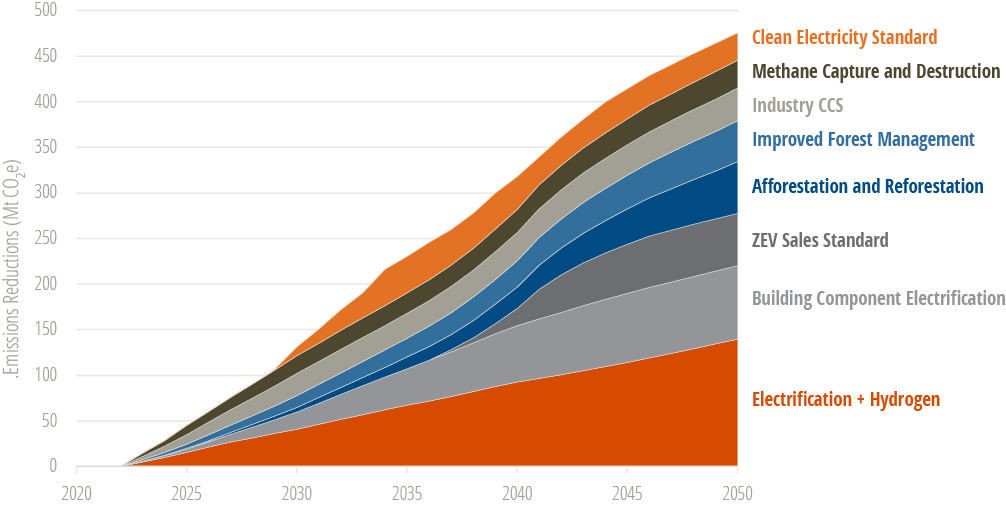
The Pembina Institute has used the Energy Policy Simulator to develop an illustrative policy scenario, “Path to 2050,” to show one possible pathway to achieving net-zero in Canada. Net-zero means cutting greenhouse gas emissions to as close to zero as possible, with any remaining emissions re-absorbed either by natural means or technological solutions.
The Energy Policy Simulator (EPS) is a free and open-source computer model developed by Energy Innovation LLC as part of its Energy Policy Solutions project. The project aims to inform policymakers and regulators about which climate and energy policies will reduce greenhouse gas emissions most effectively and with the most beneficial financial and public health outcomes.
The EPS allows users to evaluate the impacts of a wide range of policies that affect energy use and emissions. It includes every major sector of the economy: transportation, electricity supply, buildings, industry, agriculture, and land use. The EPS provides numerous insights on the impact of policies such as energy use, emissions, jobs, GDP, and employee compensation.
The Canada EPS model shows which sectors and potential policy tools could create major emission reductions in Canada. Canada is already actively developing many of these same policy sectors.
Path to 2050 scenario
Using the Energy Policy Simulator, we estimated an approximate emissions reduction from major policy levers in Electricity, Buildings, Transportation, and Oil and Gas to be 215 to 348 megatonnes cumulatively in our Path to 2050 scenario.

Clean Electricity Standard — Requires an increase in the proportion of electricity generation that comes come from carbon-free sources rather than from fossil fuels such as coal or natural gas.
Methane Capture and Destruction — Promotes reduction of methane emissions from industry by increasing the capture and combustion of methane that is currently being released into the atmosphere.
Industry CCS (carbon capture and storage) — Requires the capture and storage of CO2 from industry in order to reduce emissions to levels below those predicted in the business-as-usual scenarios.
Improved Forest Management — Seeks to increase CO2 sequestration by forests through improved forest management practices.
Afforestation and Reforestation —Promotes the increase in the sequestration of CO2 by planting new trees.
ZEV Sales Standard —Requires newly sold vehicles to consist of zero-emission vehicles (e.g. battery-electric vehicles).
Building Component Electrification — Mandates an increase in electricity-using components in buildings to replace non-electric components, such as furnaces and appliances.
Electrification + Hydrogen — Implements standards for replacing fossil fuels used for heating in the industrial sector with electricity or hydrogen.
Policy levers
These are the federal policy levers that could create major emission reductions in Canada, above business as usual.

Read more aboout the policy scenario design method and modelling limitations in the supplementary document Modelling a Path to 2050 using the Energy Policy Simulator: Method and limitations.
Jason Lam was an analyst supporting the oil and gas team at Pembina Institute in 2022-2023.



